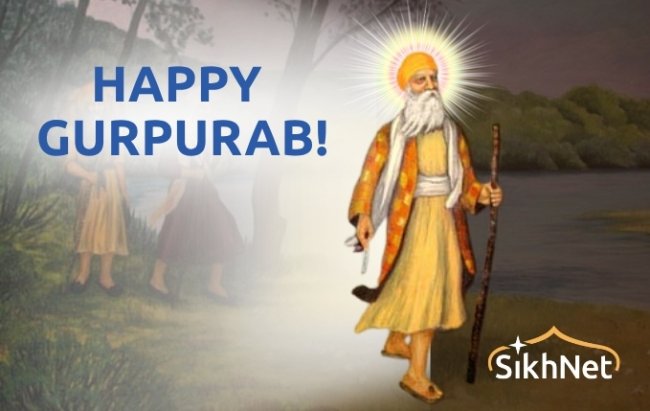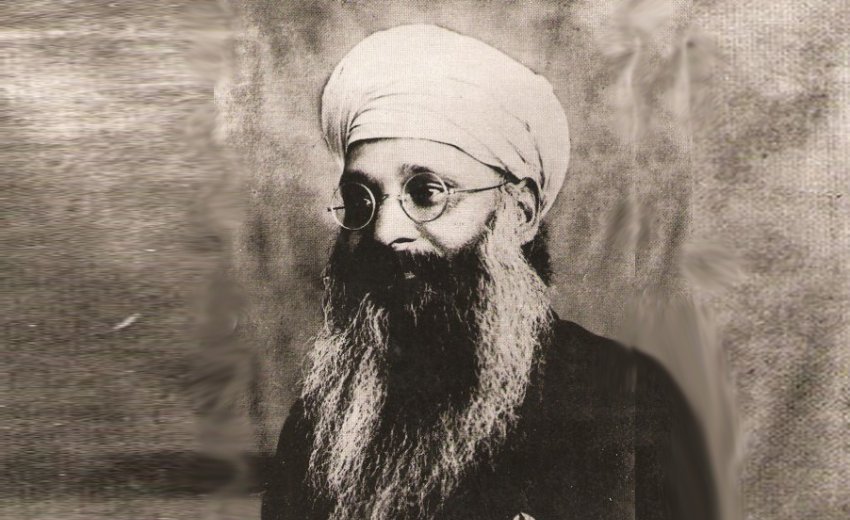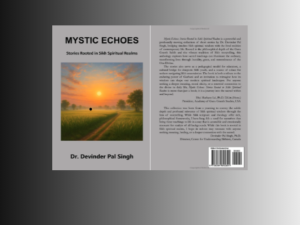Puran Singh was born on 17 February 1881 in a small village, Salhad, District Abbotabad, now in Pakistan. After passing his F.A. examination in 1899 from DAV College, Lahore, he sailed for Japan in 1900 and joined as a special student of Pharmaceutical Chemistry in Tokyo University. He was sponsored by Bhagat Gokal Chand and the enlightened Sikh elite of Rawalpindi for higher studies in Science and Technology in Japan.
 Scientific Contributions of Puran Singh: Puran Singh was the founder of chemistry of forest products in India. He was the first scientist from Punjab who got training in pharmaceutical chemistry from Tokyo University during 1900-03. He was a great genius who integrated spiritualism and science. He was employed as an Imperial Chemist at the Forest Research Institute (FRI), Dehradun, and served in this capacity for nearly a decade (1907-18).
In April 1907, Puran Singh joined as Forest Chemist in the newly created Department of Chemistry of Forest Products in Forest Research Institute (FRI), Dehradun. He worked in FRI till 1918 and made significant contributions to research, which were published mostly in Indian Forester and Forest Bulletin. Puran Singh was the founder head of Chemistry of Forest Products and took retirement on health grounds as Imperial Chemist of FRI, Dehradun. He became a member of the Chemical Society of Japan and the Royal Chemical Society of London. He published 53 research papers and notes on various aspects of chemistry of forest products[1-3].
Scientific Contributions of Puran Singh: Puran Singh was the founder of chemistry of forest products in India. He was the first scientist from Punjab who got training in pharmaceutical chemistry from Tokyo University during 1900-03. He was a great genius who integrated spiritualism and science. He was employed as an Imperial Chemist at the Forest Research Institute (FRI), Dehradun, and served in this capacity for nearly a decade (1907-18).
In April 1907, Puran Singh joined as Forest Chemist in the newly created Department of Chemistry of Forest Products in Forest Research Institute (FRI), Dehradun. He worked in FRI till 1918 and made significant contributions to research, which were published mostly in Indian Forester and Forest Bulletin. Puran Singh was the founder head of Chemistry of Forest Products and took retirement on health grounds as Imperial Chemist of FRI, Dehradun. He became a member of the Chemical Society of Japan and the Royal Chemical Society of London. He published 53 research papers and notes on various aspects of chemistry of forest products[1-3].
Professor Puran Singh's work can be classified into the following categories for the sake of discussion:
i. Studies on Essential Oils
ii. Studies on Fats and Oils
iii. Production of Tannins
iv. Production of Drugs and Pharmaceuticals
v. Miscellaneous Research Activities
A brief review of his published work is given below.
Studies on Essential Oils and Fats
After his return from Tokyo, Puran Singh set up a distillation unit in the Anarkali bazar of Lahore for the preparation of essential oils from geranium and citrus plants. He had no sophisticated equipment at his disposal and utilized earthen pots and metallic vessels manufactured by local potters and blacksmiths. He achieved excellent results and the product was marketable. However, this enterprise failed, as the business partners could not pull together for long.
Puran Singh revived his interest in essential oils after joining FRI, Dehradun. Here, the environment was conducive for research and facilities were available for the promotion of his research projects. He worked on the isolation and analysis of essential oils from Eucalyptus globulus, khus, geranium, winter-green, sandalwood, and camphor oil. For distillation of camphor oil, a new condenser was developed by him.
Puran Singh was very keen to promote essential oil industry in India. He determined the oil values of forest oil seeds and suggested improved techniques for the extraction, distillation and clarification of turpentine oil from chir resin, Pinus khasya, Pinus merkusii and Pinus excelsa. He also prepared rosin from the oleoresin of Pinus longifolia and oleo gum resin of Boswellia serrata. The medicinal use of essential oils was recommended by Puran Singh.
After his retirement from FRI, he devoted himself wholeheartedly to the promotion of essential oil cultivation and industry in India. Puran Singh was employed by Maharaja Scindia of Gwalior during 1919-23. He started cultivation of Rosha grass and Eucalyptus globulus in barren land. A factory was set up for the extraction of essential oil and the product was exported to England. The British Government was so impressed by his ingenuity and enterprise that Puran Singh was given 15 squares of land (morabbas) on lease in the district of Sheikhupura (Chak No. 73/19 near Nankana Sahib, now in Pakistan) for cultivation and export of Rosha grass. He left this project in 1928 when the whole crop was destroyed due to floods in Punjab.
Puran Singh collected a variety of oil seeds of forest origin and estimated their fat and oil contents. He studied the oil value of sandalwood from South India and suggested improved methods of cultivation and extraction to promote the sandalwood oil industry.
Production of Tannins
Puran Singh took special interest in improving the quality and production of tannins in India. He published more than two-dozen reports in Indian Forester, Forest Bulletin and Indian Forest Memoirs from 1908 to 1918. He made extensive survey of Indian forests from Himalayas to the eastern regions, including Bengal, Assam and Burma (which was part of India then).
In 1908, Puran Singh set up a laboratory for Chemistry of Forest Products in FRI from scratch and published three notes on the analysis of cutch and preparation of pure catechin, utilisation of khair forests for cutch and katha manufacture and preparation of Ngai camphor. Studies were carried out on tannins of Mangrove (Rhizophora muocronata), myrobalans, Pistacia integerrima, Arwal (Cassia auriculata) and walnut. Tannin extract was also prepared from barks of Indian oak, Terminalia tomentosa, and Panga fruits or Burmese myrobalans. Katha was prepared from dead wood of Acacia.
In India, tannins were estimated by local manufacturers using hide powder. Puran Singh introduced the use of freshly prepared nickel hydroxide for the analysis of tannin. He also studied the effect of addition of fat to the tannin extract and effect of storage on tanning materials.
Studies on Drugs and Pharmaceuticals
Puran Singh specialised in pharmaceutical chemistry from Tokyo University in 1903. He could not utilize his talents and expertise in this field after joining FRI. However, he took keen interest in the cultivation of drug-yielding plants in Indian forests. A report was published in Indian Forester during 1913 highlighting this aspect. Camphor content of Cinnamomum camphora grown at Dehradun was determined. Therapeutic value of some essential oils, e.g. sandalwood and wintergreen, was assessed by Puran Singh and their use in drug manufacture was recommended. He also studied the effect of mineral salts as fish poison. He studied earth eating habits of the Indian deer and drew some conclusions about this tendency of Indian women during their pregnancy.
Miscellaneous Research Activities
Puran Singh carried out research investigations in various other fields. He initiated studies on the preparation of pure shellac and Burmese varnish. In 1910, he reported his results on analytical constants of shellac, lac, resin and lac wax in the Journal of Chemical Society. He carried out calorimetric tests on Indian woods, which proved to be of high scientific value. The composition of Ceara rubber from Coorg was determined by Puran Singh. He prepared wood-tar by destructive distillation of wood. A method for distinguishing powellised and unpowellised woods and a field test for the identification of paraffin in bees wax were developed by Puran Singh. Along with R.S. Pearson, he prepared charcoal briquettes from Indian woods in 1918, a technique now being revived by scientists of IIT, New Delhi under a programme on efficient use of fuel-wood.
Puran Singh worked as a Sugar Chemist in the sugar factory of Sir Sundar Singh Majithia in Sardarshahr near Gorakhpur during 1923-25. He patented a novel technique for cleaning and decoloration of crystal sugar prepared from raw sugar. This technique became very popular in Indian sugar industry, as it did away with the use of bone charcoal, which was disliked by all Indians in general, and the Brahmins in particular. Puran Singh had no research facility and approach to scientific journals during this period. It was his genius to invent a new technique in an entirely new field for which he received great appreciation from Indian fellow chemists at the Indian Science Congress session held at B.H.U., Varanasi.
Contributions of Puran Singh to Sikh Spirituality: Puran Singh was a highly volatile and emotional young man. His thought and personality were shaped by four climactic events in early life: his Japanese experiences, his encounter with Walt Whitman, his discipleship of Swami Ram Tirath, and his meeting with Bhai Vir Singh, the great Sikh savant.
Puran Singh was a young Sikh boy in his teens when he joined Tokyo Imperial university in 1900. He was accorded a rousing welcome in Japan. He was a brilliant student of Tokyo University, a great orator, a revolutionary in the offing and a handsome young man. He represented not only India but also the land of Great Buddha, which made him a privileged student. In his Japanese reminiscences, Puran Singh recounts his meetings with Japanese friends, Buddhist monks, the great artist and writer Okakura; his love and regard for Japanese flower shows, Japanese tea ceremony, Geisha and the Japanese housewife. He was so much infatuated with Japanese life and culture that he became a Buddhist Bhiku in Japan[4].
His foray into Buddhism was short lived. Swami Ram Tirath happened to visit Tokyo on his way to USA in 1902. He was a brilliant mathematician who renounced the world and became a Vedantist. Puran Singh had an encounter with Swami Ram Tirath and was transformed from a Buddhist Bhiku to a Hindu Vedanti. He started wearing yellow robes of a Sanyasi. Puran Singh writes about this encounter: "And there I met an Indian saint who came from India. He touched me with the Divine Fire and I became a Sanyasin. He put many ideas in my head in pursuance of what these modern Hindu monks were keen, nation making, awakening India to its greatness. I threw all my books of science and notebooks aside, and started for India. I arrived back full of dreams and sweet hopes, with which the Hindu Sanyasin had mixed thunder and lightning and the wish to be effective for 'work'. But in spite of the yellow robe, I could not forget the 'nest' which I had left"[5].
Puran Singh remained a follower of Swami Ram Tirath as a Hindu Sanyasin for a full decade (1902-1912). Despite strong opposition from his family and community, he remained adamant in his adopted way of spiritual life. There were some unpleasant issues to be resolved before his marriage but his in-laws accepted him as a bridegroom in yellow robes. He adopted the family life reluctantly as he had given a solemn promise to his dying sister Ganga on her death bed just after his return from Japan in 1903.
Spiritual journey of Puran Singh took a quantum jump after his chance meeting with Bhai Vir Singh during Sikh Educational Conference held in Sialkot in 1912. Bhai Vir Singh was highly impressed by the fiery oration of Puran Singh during this conference. He invited Puran Singh to his chamber and touched his head with divine love of a Sikh saint. Puran Singh records this chance meeting in his own words[6]:
Puran Singh's home coming to the Sikh fold opened flood gates of Spirituality. He was a transmuted personality after his forays into Sikh literature, especially the Sikh scripture, Guru Granth Sahib. His outpourings in both Punjabi and English poetry deserve him the coveted Nobel Prize but unfortunately the Sikh academia and intelligentsia never recognized his worth. He was regarded as a disciple of Bhai Vir Singh, the venerated Sikh Scholar, which was true, but he was far more modern in his interpretation and exposition of Sikh spirituality.
Puran Singh was against religiosity of religions all his life. He believed in spirituality which is a common factor in all religions. He believed in the Sikh ideal "Kirat Karo, Vand Chhako and Naam Jappo." Hence his spirituality is derived from this Sikh ideal. He writes: "Work makes us spiritual. Let us therefore give up all worship of God but work. This is the fundamental message of the Guru to man in struggle, to the man bound in body. The worker, the labourer, is the man of honour; the creator of bread is man in spiritual action[7]."
Puran Singh's views on spirituality are expressed vividly in his Punjabi poetry; a stanza of the poem from Khule Maidan is most appropriate to be quoted[8]:
AwvIN qUM r~bw myirAw
AwvIN qUM r~bw myirAw, vihlw vihlw AwvIN,
qwvlw qwvlw, qy s~tIN pry h~Q myry iv~coN Koh ky,
ieh GMtIAW, t~lIAW, ijhVIAW mYN h~Q ivc PVIAW, qyrI pUjw leI,
qy AwvIN buJwvIN Awp qUM Awpxy h~Q nwl,
ieh dIvy Qwl ivc pwey mYN, qyrI AwrqI krn nUM[
Puran Singh wrote nearly two dozen volumes in Punjabi and English including some translation work of great beauty. In my view, his most celebrated work is compiled in 3 volumes classified under the title "Spirit of the Sikh"[9]. There are 21 essays in Part I[10] with sub-title "Meditations on Religion and the Spiritual Experience". Puran Singh tries to explain Sikh Ideals and Ideology in these essays relying on Sikh literature and Gurbani in his typical poetical prose. Some of these titles "The Sikh", "The Sikh Symbolism", and "The Khalsa of Guru Gobind Singh" are not only informative but also spiritually uplifting. For example, he defines Khalsa in the way Guru Gobind Singh sings passionately:
Know him the Khalsa, the pure."
Puran Singh was the first exegete who took liberty to translate some important Banis of Guru Granth Sahib in his original and immaculate style. His rendering is classified under title: "Readings from Guru Granth". His choice is purely arbitrary. The complete translation of JAPU of Guru Nanak is available[11]. However, other Banis like Asa Ki Var, Sukhmani, Siddh Goshit and Slokas of Guru Teg Bahadur and Kabir are rendered into English selectively. The beauty of his translation is unmatched and touches the chord with seekers of spiritual truth.
Puran Singh appreciates the creation of Japuji of Guru Nanak in no uncertain terms: "Japuji is a hymn that has in its ring the tremble of the stars, the flickering lamps of blue-domed Temple (the sky). Japuji of Guru Nanak lifts us up to great heights. We clasp the stars in one hand and roots of life on earth in the other. Nothing in the other scriptures and Bibles of men equals Japuji in its wonder, its depth and its simple clarity of perfect revelation of personal truth". Again he writes about his translation of Japuji: "I think it is of no benefit to translate it. Having translated it once, in another mood, I am impelled to translate it again. At least, I wish to translate it endlessly. And it is forever impossible to translate it"[12]. For example, the opening verse of Japu (called Moolmantar in Sikh parlance) has been rendered in a different style in 'The Spirit Born People'[12] as compared to his rendering in other text[11]:
O Beloved,
Thy name is Truth
Thou art the Person who creates,
Thou art the humanity that hath no fear, no enmity.
Thy shining spiritual form is above time and space.
Thou art immortality,
Self-radiant Thou, O Love,
Whom no birth can envisage
And no death can remove,
O Beloved, Sacred secret is Thy name.
And it opens like the flower of life in the kindness of the Guru.
G.S. Talib, the learned editor of the Spirit of the Sikh, sums up his impressions about Puran Singh's 'Readings from Guru Granth Sahib' as follows: "The author, in his ecstasy of devotion, throws out appealing parallels to the original, without however, the scrupulous care for a near-reproduction. His renderings are 'transcreations' in a very wide sense. Puran Singh did not take whole hymns, but often selected verses out of these, and that too not in a running sequence; hence it adds to the difficulty of identification"[13].
Puran Singh writes in his introductory note on Asa-ki-Var: "This music is struck in all Sikh temples and in all Sikh hearts every morning. In Asa-ki-Var, Guru Nanak is seen busy destroying the strongholds of Brahmanical superstition, with a persistent determination. And lo! he has cleared the ruins away, and has built on their site a thousand-pillared temple of song for all peoples and nations of the earth to gather in and worship"[14].
I find a subliminal theme running in the poetry of Puran Singh, which I call 'Sikh Spiritual Consciousness'[15]. A beautiful essay on 'Surta-Soul Consciousness' explains this concept in the book, 'The Spirit Born People' written by Puran Singh in the form of lecture notes to be delivered to the Sikh youth of Punjab.
In his preface to Khule Ghund[8], Puran Singh differentiates between Surta and Ego, as follows:
Puran Singh elaborates the concept of Surta in his two poems in Khule Ghund:
(i) Surt ate Hankar (Consciousness and Ego), and
(ii) Guru Avatar Surat
Surta determines the state of mind and consciousness and it has to be kept tuned to the Guru's Shabad. Puran Singh illustrates the rise and fall of Surta by quoting examples from world history in his essay. According to him, the Sikh history is a mere reflection of Sikh Surta. The Sikhs will become fossils if the Surta (Sikh Spiritual Consciousness) is dead[7].
Puran Singh's Views on Sikh Gurus:[16] After Buddha, it was Guru Nanak who for the first time championed the cause of the masses in caste-ridden India. The rich aristocracy and the degraded priests of Hindus and Muslims did not listen to the Guru, but the oppressed people followed him with joy. He made a whole people throb with love and life. For more than a century and a half his message was secretly flaming in the bosom of the people when the genius of Guru Gobind Singh gave them the eternal shape of the Disciples, the Khalsa.
Guru Gobind Singh is the Guru of the modern times. Assuredly, the slaves of India have not understood Him so far and are not capable of understanding His genius. The shadow of his large personality falls far away above the head of centuries, and the so-called best intellectuals of India, when they spread out their mind to understand the Guru, get bruised by mere thorns and give Him up as something not as spiritual as Guru Nanak. If they cannot see Guru Gobind Singh as the highest, brightest culmination of Guru Nanak, assuredly they do not understand that King of revolution of religious thought, the great Guru Nanak.
The world of thought has yet to understand the Ten Gurus in the splendour of their thought which has been misunderstood due to the Brahmanical language they had to employ to express themselves and to the Brahmanical environment which always has been inimical to the true progress of man.
The Guru Granth of the Sikhs is the most authentic account of the Guru's soul. It is a pity that some Sikh enthusiasts and half-baked scholars, perverted by the thought of the age, have tampered with the meanings they themselves wish to give it. But the authentic word of Guru Granth can never be lost to the world. And as the Bible is translated into different languages, so Guru Granth will have to be put by poets of different nations into their own language direct from their own souls. Life alone can translate life.
The Guru Granth is the history of the Sikh soul, and its translation is to come through the great figure of the social reconstruction of human society as the Khalsa, where shall reign love, and not hatred. Without the Word of the Guru, and the ideal, the Khalsa, which stands for the sovereign society, there is no key to the heart of Guru Nanak and his anthems for the liberation of man. Its interpretation lies in our human soul, not in the meanings of this life creative music. The destruction by the Guru of the Brahmanical Citadels of superstition (as in Guru Nanak's Asa-Ki-Var or in the great Kabits and Sawayyas of the Tenth Master, Guru Gobind Singh, or in the Vars of Bhai Gurdas, the great exponent of Sikh ideals), is symbolic of the destruction of all lies on which human society might be wrongly founded and misguided. Guru Nanak is universal, but he is mostly the Prophet of the future. Freedom of the human mind and soul is the Guru's passion.
Concluding Remarks: Punjabi University, Patiala, has published all the literary works of Professor Puran Singh, which run into two-dozen volumes in English, Punjabi and Hindi (Appendix I). He was a great mystic poet and one of the first few interpreters of the Sikh scripture in English. He was a great visionary who predicted the fall of communism and break up of Soviet Union during 1920s. His writings have much relevance to the present Punjab crisis and provide some unique insights for finding a solution to the problem. Puran Singh aspired for a Nobel Prize in literature[17]. He died on 31 March 1931 in Dehradun at the age of 50. He was a scientist by training and profession. Unfortunately, no attempt has been made so far to evaluate his scientific contributions at the national level, though he was a founder of Chemistry of Forest Products in India.
References
1. H.S. Virk. Life and Works of Puran Singh. Indian Journal History of Sciences, 1993, Vol. 28, pp. 277-285.
2. H.S. Virk. Professor Puran Singh (1881-1931): Founder of Chemistry of forest products in India. Current Science, 1998, Vol. 74, pp.1023-24.
3. H.S. Virk. Professor Puran Singh: Scientist, Poet and Philosopher. Tarlochan Publishers, Chandigarh, 2008, pp. 32-39.
4. Puran Singh. On Paths of Life. Punjabi University, Patiala, 1982, p. 129.
5. Ernest and Grace Rhys. Introduction to Sisters of the Spinning Wheel and other Sikh Poems by Puran Singh. 1921, p.xxix.
6. Puran Singh di Vartak. Sahitya Akademi, New Delhi (1967), p. 14.
7. Puran Singh. The Spirit Born People. Published by Punjabi University, Patiala, 1976, p. 28.
8. Puran Singh: Jeevani ate Kavita (Life and Poetical Works). Edited by M.S. Randhawa, Sahitya Akademi, New Delhi, 1976, p. 289.
9. Puran Singh. Spirit of the Sikh. Part II, Vol. I & II, Panjabi University, Patiala, 1982.
10. Puran Singh. Spirit of the Sikh. Part I, Panjabi University, Patiala, 1978.
11. Puran Singh. The Sisters of the Spinning Wheel. Panjabi University, Patiala, 1977, pp. 63-82.
12. Puran Singh. The Spirit Born People. Punjabi University, Patiala, 1976, pp. 76-77.
13. GS Talib. Spirit of the Sikh. Part II, Vol. 1. Published by Punjabi University, Patiala, 1980, p. 158.
14. Puran Singh. Spirit of the Sikh. Part II, Vol. 1. Published by Punjabi University, Patiala, 1980, p. 196.
15. H.S. Virk. Puran Singh-A Poet of Sikh Spiritual Consciousness. Khoj Patrika (Special Issue on Puran Singh) Edited by Rattan Singh Jaggi, Punjabi University, Patiala, 1981.
16. H.S. Virk. Puran Singh's Views on Sikh Gurus, Sikhs and the Khalsa Raj. Journal of Sikh Studies, Vol. XI, No. II, 1984, pp. 116-125.
17. Puran Singh. Walt Whitman and The Sikh Inspiration. Punjabi University, Patiala, 1982.
Annexure I :
Literary Works of Puran Singh A. English
1. The Spirit of Oriental Poetry
2. The Temple Tulips
3. The Sisters of the Spinning Wheel
4. Unstrung Beads
5. The Bride of the Sky-A poetic drama
6. Parkasina-A Buddhist Princess (A novel)
7. Spirit Born People
8. Spirit of the Sikh: Part I & Part II (Vol. I and II)
9. On Paths of Life (An autobiography)
10. Book of Ten Masters
11. Guru Gobind Singh-Reflections and Offerings
12. Walt Whitman and Sikh Inspiration
13. Swami Rama Tirath
B. Punjabi
14. Khule Lekh
15. Khule Ghund
16. Khule Asmani Rang
17. Khule Maidan
C. Translation
18. Resurrection-Leo Tolstoy
19. Hero and Hero Worship-Carlyle
20. Poems of Joy-Walt Whitman
21. Essay on the Poet-Emerson
~~~
published in Sikh Philosophy Network on Nov 28, 2004. https://www.sikhphilosophy.net/threads/professor-puran-singh-scientist-p...





